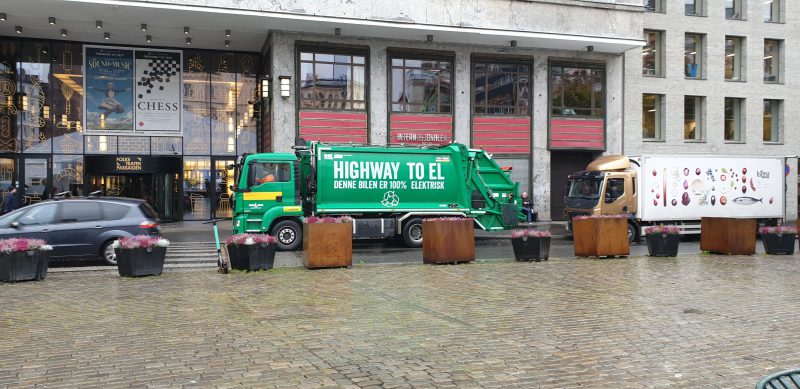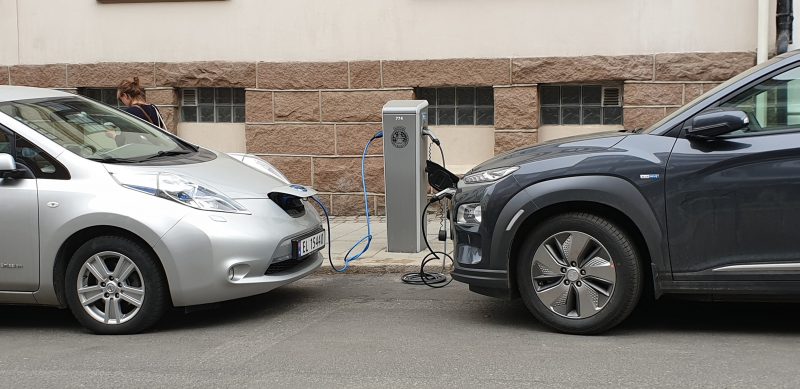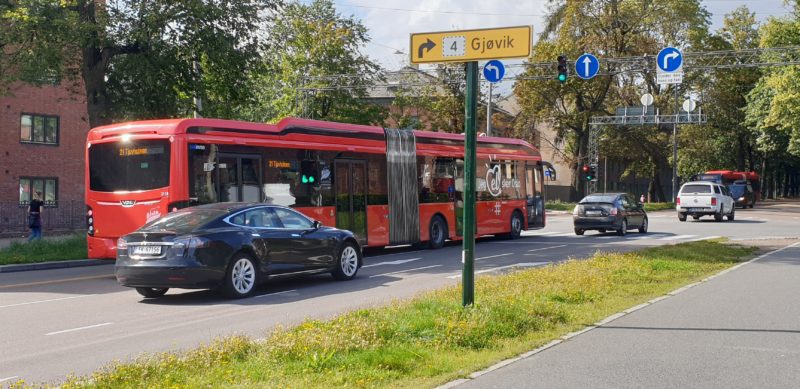Norway’s reputation as a global leader in electric vehicles is well deserved. This week, it was announced that Oslo city reached the milestone of 50,000 electric vehicles. It now has the highest per-capita representation of EVs in the world, and new car sales are now easily more than half electric in the country. This means 10% of the total fleet of vehicles in Norway is already zero emissions, and that number is climbing.
It’s an enviable position. The country is small, but it is way ahead of the curve. It is, of course, one of the world’s largest producers of oil, and has drawn much of its incredible wealth from the sale of fossil fuels. So there’s plenty on the opposite side of the ledger to criticise. But it is still significant that Norway is putting effort into making its own main export industry redundant.
Can it be replicated elsewhere? Perhaps in bigger countries in Europe, all trying to arrest the rise of the four-wheel drive? Maybe. But to figure that out, we need to dive into what made it work in the first place.
The right carrots
Coming from an energy background, my head is always in subsidies, but the incentives for EVs in Norway were always centred heavily on tweaks to the taxation system. It’s effective because everything is heavily taxed in Norway (I just came back from buying two bottles of wine and I can confirm this).

It has a long history. Pop group a-Ha began promoting EVs in the country in 1989. From 1990, EVs were exempt from purchase and import taxes. From 2001, they were exempt from the VAT (the equivalent of the GST). From 1997 to 2017, they didn’t get charged road tolls or ferry tolls. And electric vehicles are free to use bus lanes (though I’ve heard people complain that that now tends to clog up bus lanes, simply because there are so many EVs). The Norwegian electric vehicle association lists fifteen incentive schemes here, and they’ve all contributed to the rising share of electric vehicles within Norway’s fleet.
These tax cuts are set to be in place until the end of 2021, meaning the records will probably just keep being broken. This transition was far from organic. It was created and sustained by a set of conscious and significant policy decisions. Norway’s air is cleaner and transport emissions lower thanks to these specific policies.

The right chargers
Oslo launched a municipal charging infrastructure program in 2008, and the outcomes are clear. Most streets you walk down, you’ll see a charging point. They’re ubiquitous across the city, and it’s common to see a cable snaking out, plugged into the side of a nearby car. By 2011, Norway had 1,900 charging points. Today, the Norwegian charging database has 2,500 charging stations and more than 12,000 charging points. You can really tell how big this whole project is when the organisation that simply maintains the database of charging points says something this poetic on their site:
“Electrification of road transport is a sign that we are leaving the oil age and heading into an era in which renewable energy sources will transform our cars into «perpetual motion machines», powered by the wind that blows, the rivers that run, the sun that shines and the waves that beat against our shores. Our cities will be alive, free of noise and fumes”.
Progress is still accelerating. The government launched a program to feature two fast-charging stations every fifty kilometres, and every main road in Norway features at least one.

Can Australia do it too?
Each time Norway’s EV transition comes up during global energy events, there’s always a flurry of caveats pointing out that the experiences here in Norway cannot be generalised to other countries.
It’s true; the political and environmental situation – particularly the uniquely clean grid – are tough to replicate. But there are efforts to try. Christine Bu, head of Norway’s Electric Vehicle Association, said in 2017 that “I don’t think many other countries can or should look to copy exactly what we have done in Norway because circumstances are different. But there are elements to consider, such as bus lane access or free public parking that don’t cost much. Instead of raising taxes, countries like Sweden are about to shift car taxes onto higher polluting vehicles, so the overall tax take remains the same while encouraging more people into EVs”.
Great ideas – but Australia is already missing opportunities, and getting things wrong, such as a recent plan in NSW to place a road user tax on EVs. “What it would mean, in practice, is that even fewer of the world’s best and most affordable EVs would ever reach NSW roads. Car manufacturers are already loathe to bring the best EVs in their range here, because of Australia’s lack of fuel efficiency standards. This kind of tax would exacerbate the problem considerably,” said the Electric Vehicle Council’s Beyhad Jafari.
Norway’s EV success is a simple reminder of something too often forgotten: policy and hard work both result in real change. In Oslo, the air is cleaner, the roads are quieter and the space for public transport, cycling and walking to flourish increases as combustion engines are relegated – slowly – to history. It is a real change to the lived experience of a city, and that’s before you even count the emissions reductions help for climate action.
The world would do so well to look at Norway’s electric recipe and take inspiration for cities and countries.

Ketan Joshi has been at the forefront of clean energy for eight years, starting out as a data analyst working in wind energy, and expanding that knowledge base to community engagement, climate science and new energy technology. He writes for The Driven’s parent site, RenewEconomy, and has also written for the Guardian, The Monthly, ABC News and has penned several hundred blog posts digging into climate and energy issues, building a position as a respected and analytical energy commentator in Australia. He’s spoken at the Ethics Centre IQ2 debates on the need for urgent decarbonisation, he’s served as an subject matter expert on national television, and has a wide following on social media around energy and climate.

